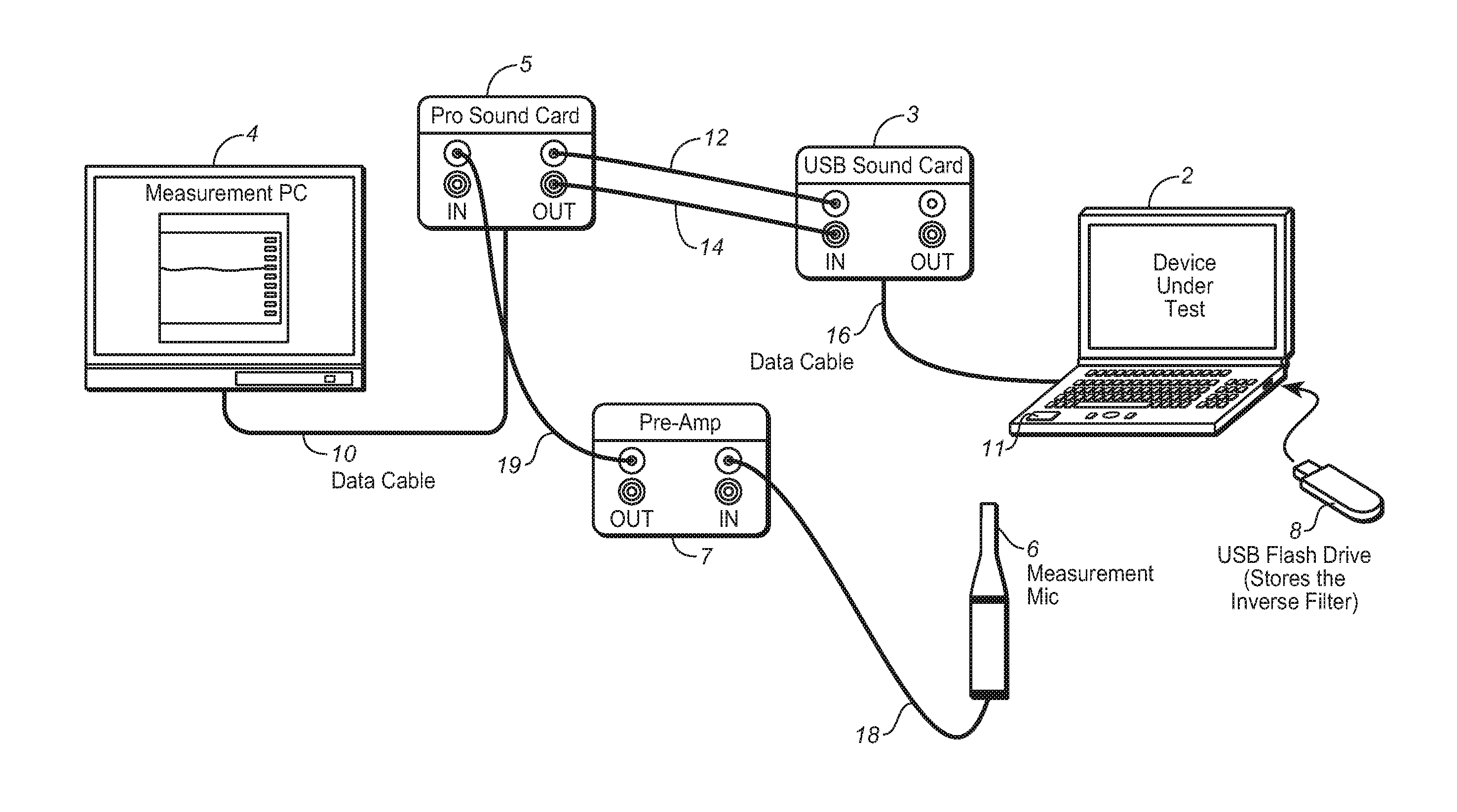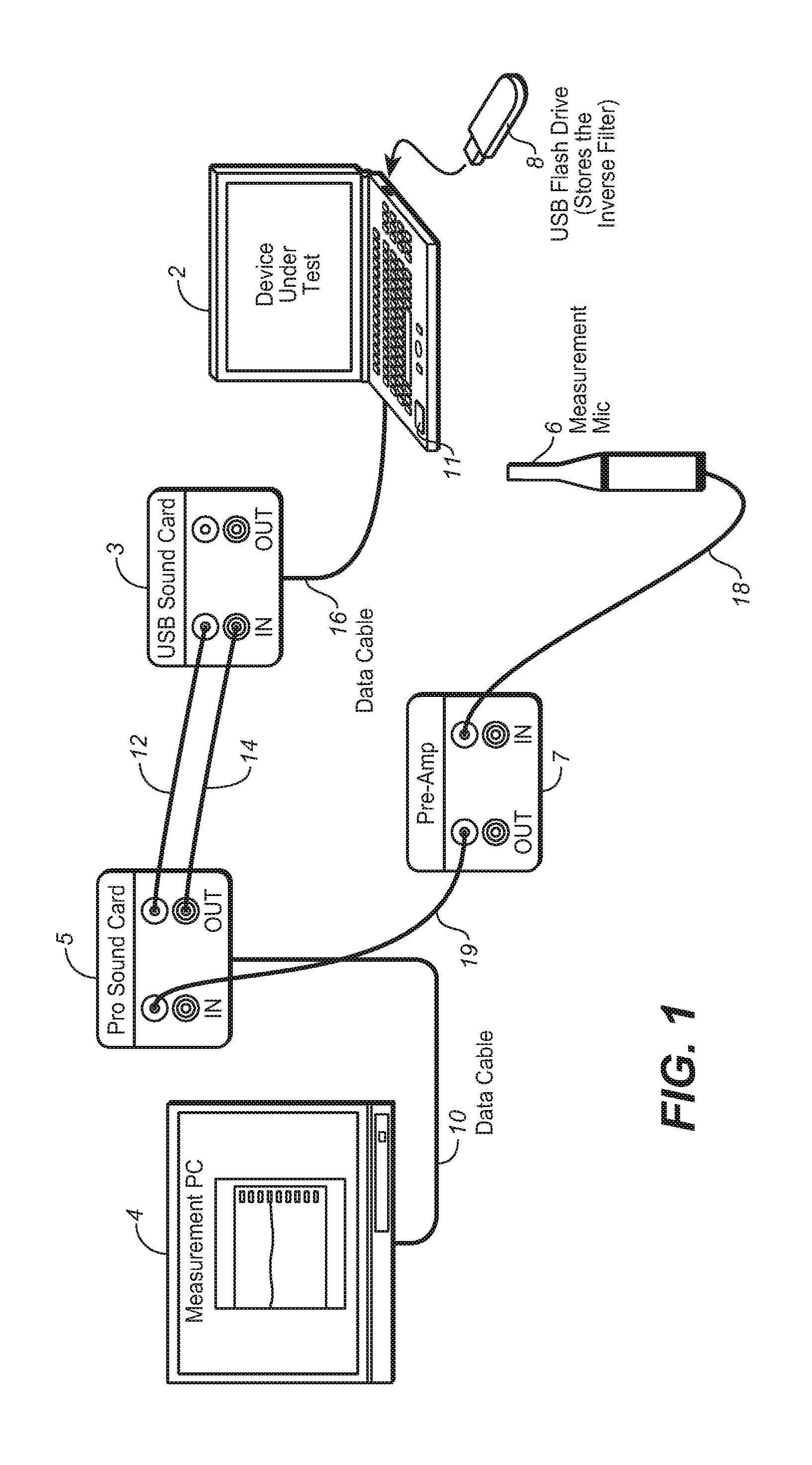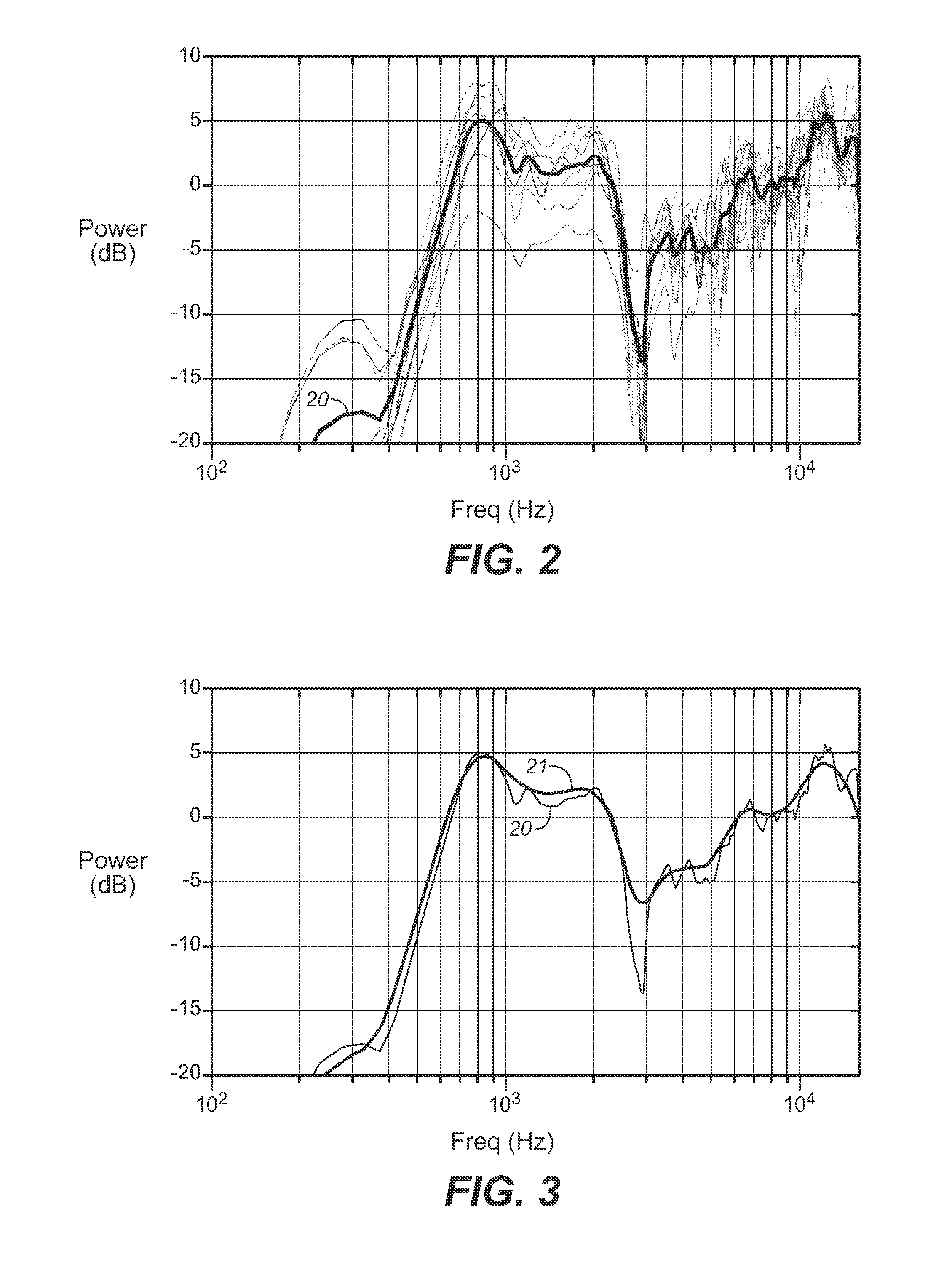Method for Determining Inverse Filter from Critically Banded Impulse Response Data
a technology of impulse response data and inverse filter, which is applied in the direction of frequency response correction, signal processing, electrical equipment, etc., can solve the problems of severe distortion in a fully inverse filter system, and achieve the effect of efficiently performing inverse filter determination and minimizing the expression of mean square error
- Summary
- Abstract
- Description
- Claims
- Application Information
AI Technical Summary
Benefits of technology
Problems solved by technology
Method used
Image
Examples
Embodiment Construction
[0051]Many embodiments of the present invention are technologically possible. It will be apparent to those of ordinary skill in the art from the present disclosure how to implement them. Embodiments of the inventive system, method, and medium will be described with reference to FIGS. 1-9.
[0052]FIG. 1 is a schematic diagram of an embodiment of a system for determining an inverse filter in accordance with the invention. The FIG. 1 system includes computers 2 and 4, sound card 5 (coupled to computer 4 by data cable 10), sound card 3 (coupled to computer 2 by data cable 16), audio cables 12 and 14 coupled between outputs of sound card 5 and inputs of sound card 3, microphone 6, preamplifier (preamp) 7, audio cable 18 (coupled between microphone 6 and an input of preamp 7), and audio cable 19 (coupled between an output of preamp 7 and an input of sound card 5). In typical embodiments, the system can be operated to measure the impulse response of a loudspeaker (e.g., loudspeaker 11 of com...
PUM
 Login to View More
Login to View More Abstract
Description
Claims
Application Information
 Login to View More
Login to View More - R&D
- Intellectual Property
- Life Sciences
- Materials
- Tech Scout
- Unparalleled Data Quality
- Higher Quality Content
- 60% Fewer Hallucinations
Browse by: Latest US Patents, China's latest patents, Technical Efficacy Thesaurus, Application Domain, Technology Topic, Popular Technical Reports.
© 2025 PatSnap. All rights reserved.Legal|Privacy policy|Modern Slavery Act Transparency Statement|Sitemap|About US| Contact US: help@patsnap.com



